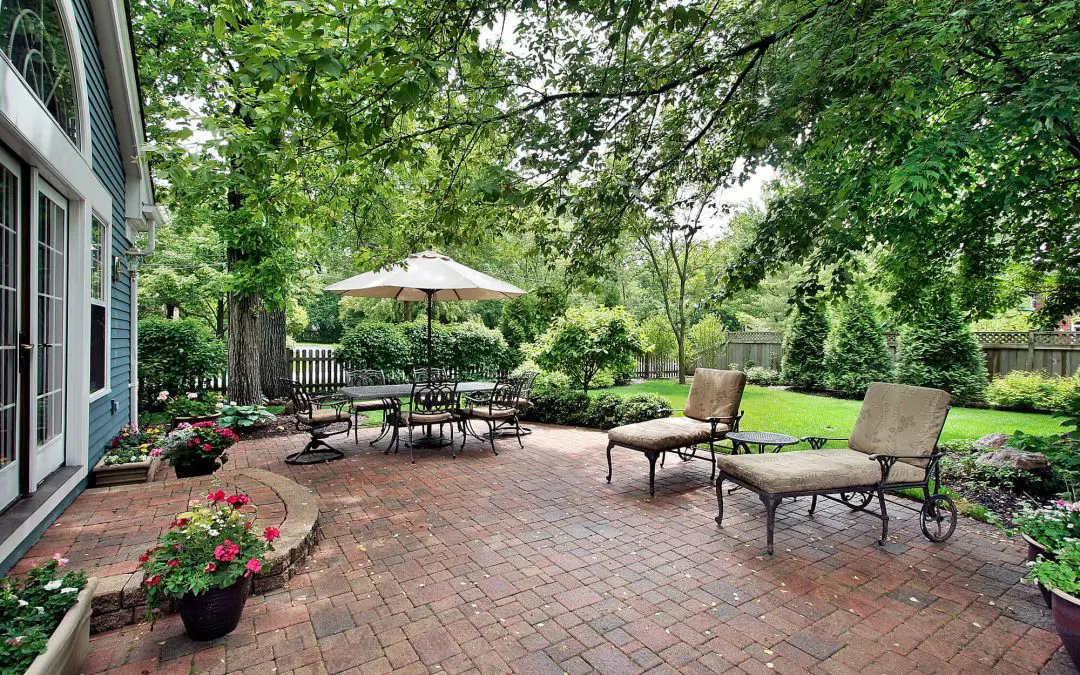Designing a patio involves more than just picking out furniture and plants. The foundation of your patio, the material you choose, plays a crucial role in both aesthetics and functionality. With numerous patio material options available, each offering its own advantages, it’s essential to find one that matches your style, budget, and maintenance preferences. In this post, we’ll explore some of the most popular patio materials to help you make an informed decision.
Concrete Patio Materials: Versatile and Budget-Friendly
Concrete is one of the most versatile and affordable patio materials. It offers a wide range of design possibilities, from a smooth, clean finish to stamped patterns that mimic stone, brick, or tile. Concrete’s flexibility also allows you to customize your patio with colors and textures to fit your desired look. Additionally, concrete is durable and long-lasting, making it a reliable choice for homeowners looking for a patio that requires minimal maintenance.
However, concrete can crack over time, especially in areas with freeze-thaw cycles. Proper installation and regular sealing helps mitigate this issue. If you live in a region with extreme weather, it’s worth considering how well concrete will hold up in your climate.
Pavers: Stylish and Customizable
Pavers are individual units made from materials such as concrete, brick, or stone, arranged to create a pattern. This option allows for endless design customization, as you can mix and match colors, shapes, and patterns to create a unique patio layout. Pavers are known for their durability and resistance to cracking, as the joints between them allow for natural movement during temperature changes.
The downside to pavers is that they’re more expensive than concrete, especially when using high-end materials like natural stone. They also require regular maintenance, such as sweeping and occasional re-leveling to keep the surface even. Despite these considerations, pavers offer a timeless and elegant look that enhances any outdoor space.
Natural Stone Patio Materials: Elegant and Durable
Natural stone is a luxurious patio material that exudes a timeless, elegant aesthetic. Materials like slate, bluestone, and flagstone are popular choices for homeowners looking to create a rustic or sophisticated outdoor environment. Each stone has its own unique color variations and textures, which means no two stone patios look the same.
Stone is one of the most durable materials, able to withstand various weather conditions, making it ideal for long-term use. However, natural stone is also one of the more expensive options on the market. It can be labor-intensive to install and may require professional expertise to achieve a polished finish. In addition, certain stones become slippery when wet, so it’s important to select a texture that offers traction for safety.
Brick: Classic and Charming
For a traditional or historic look, brick is an excellent choice. Its classic charm brings warmth and character to any patio design, often making it a preferred option for colonial-style or cottage-style homes. Brick is durable and relatively low maintenance, resisting stains and weather-related damage over time.
One thing to consider with brick patios is their tendency to shift or settle over time, which creates uneven surfaces. While the material is relatively long-lasting, it may require occasional re-leveling to maintain its appearance. Brick also limits design flexibility compared to pavers or stamped concrete, but its timeless appeal and sustainability make it a worthwhile investment for many homeowners.
Gravel: Informal and Cost-Effective
Gravel is a simple, informal patio material that works well in casual or rustic settings. It’s one of the most affordable options, making it a great choice for budget-conscious homeowners. Gravel patios are easy to install and allow for excellent drainage, which can be beneficial in areas prone to heavy rainfall.
While gravel provides a natural and laid-back aesthetic, it does require some upkeep. The material can shift underfoot, and weeds may pop up over time. Gravel isn’t the most comfortable surface for walking barefoot or for placing heavy furniture. However, its affordability and natural appearance make it a popular choice for those seeking a relaxed, rustic patio.
Tile Patio Materials: Modern and Stylish
Tile is a modern, sleek option that offers a wide variety of colors, patterns, and sizes. Porcelain and ceramic tiles are popular choices for outdoor patios due to their durability and resistance to moisture. Tile patios create a contemporary, clean look that pairs well with minimalist or Mediterranean-style homes.
One consideration with tile is that it can be slippery when wet, so it’s crucial to choose tiles with a non-slip finish for outdoor use. Tile patios also require proper installation and sealing to prevent cracks and chips. While tile can be a bit pricier than some other materials, its modern aesthetic and design versatility make it an attractive option for many homeowners.
Wood: Natural and Warm
Wood patios offer a warm, natural feel that blends seamlessly with the surrounding landscape. Popular options include pressure-treated wood, cedar, and redwood, all of which are naturally resistant to rot and insects. A wood patio can be stained or painted to suit your design preferences, making it a versatile material for various outdoor styles.
However, wood requires regular maintenance to keep it looking its best. Staining, sealing, and occasional repairs are necessary to prevent warping, rotting, or fading from sun exposure. For homeowners who love the look of wood but prefer lower maintenance, composite decking is an alternative, though it often comes with a higher price tag.
Choosing the Right Material for Your Patio
The material you choose for your patio should align with your lifestyle, budget, and aesthetic preferences. If you prioritize durability and low maintenance, concrete or pavers may be the ideal choice. For those who desire a more luxurious, natural look, stone or brick could be the perfect fit. If cost-effectiveness is important, gravel or wood may be worth considering.
Before making your final decision, consider the climate in your area, how much maintenance you’re willing to do, and how the material complements the overall design of your home. With the right material, your patio can become a functional and beautiful extension of your living space, offering years of enjoyment and relaxation.
FAQs
Can I install a patio myself, or should I hire a professional?
While some materials, like gravel or wood, can be DIY-friendly, more complex materials, such as pavers, concrete, and natural stone, often require professional installation for the best results. A professional will ensure proper leveling, drainage, and finishing techniques that extend the life of your patio and prevent costly repairs.
Which patio material stays coolest in the sun?
Natural stone, particularly lighter-colored options like bluestone or limestone, tends to stay cooler underfoot compared to darker materials like brick or concrete. Porcelain tile can also be a good option for keeping cool, as it reflects rather than absorbs heat. When selecting a material, consider both its color and its heat retention properties if you plan to use the patio in sunny areas.
What’s the most eco-friendly patio material?
Reclaimed or recycled materials, such as salvaged brick or pavers, are among the most eco-friendly patio options. Using locally sourced natural stone also reduces the carbon footprint associated with transportation. Additionally, permeable pavers allow rainwater to filter into the ground rather than runoff, contributing to sustainable water management.
Can I build a patio over an existing concrete slab?
Yes, many patio materials, including pavers, tile, and even wood decking, can be installed over an existing concrete slab. This method refreshes the look of an aging patio without the need for a full replacement. However, to avoid long-term issues, make sure the slab is in good condition and properly leveled before installation.
Professional Inspection Network provides home inspection services to Southern California. Contact us to schedule an appointment.

